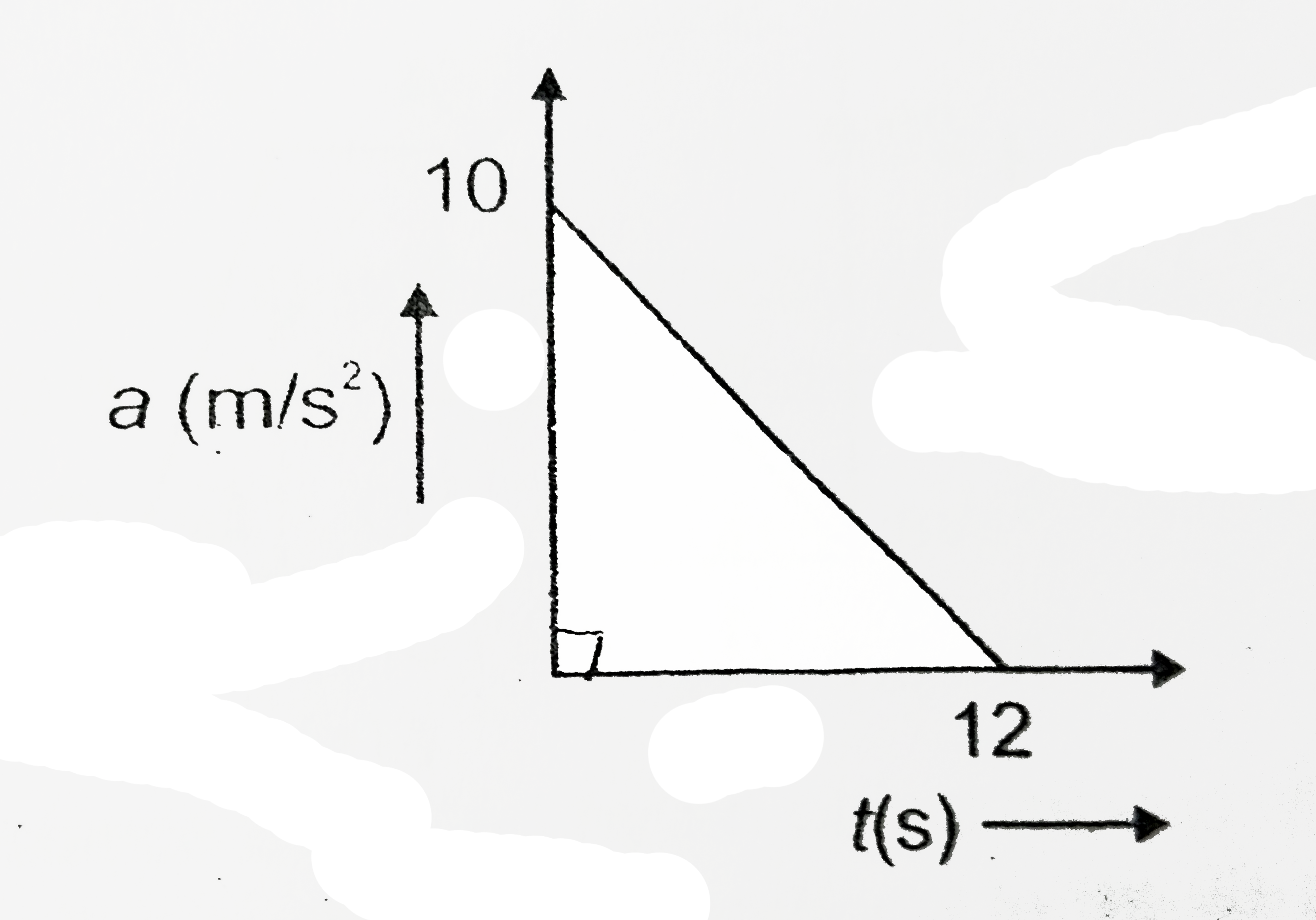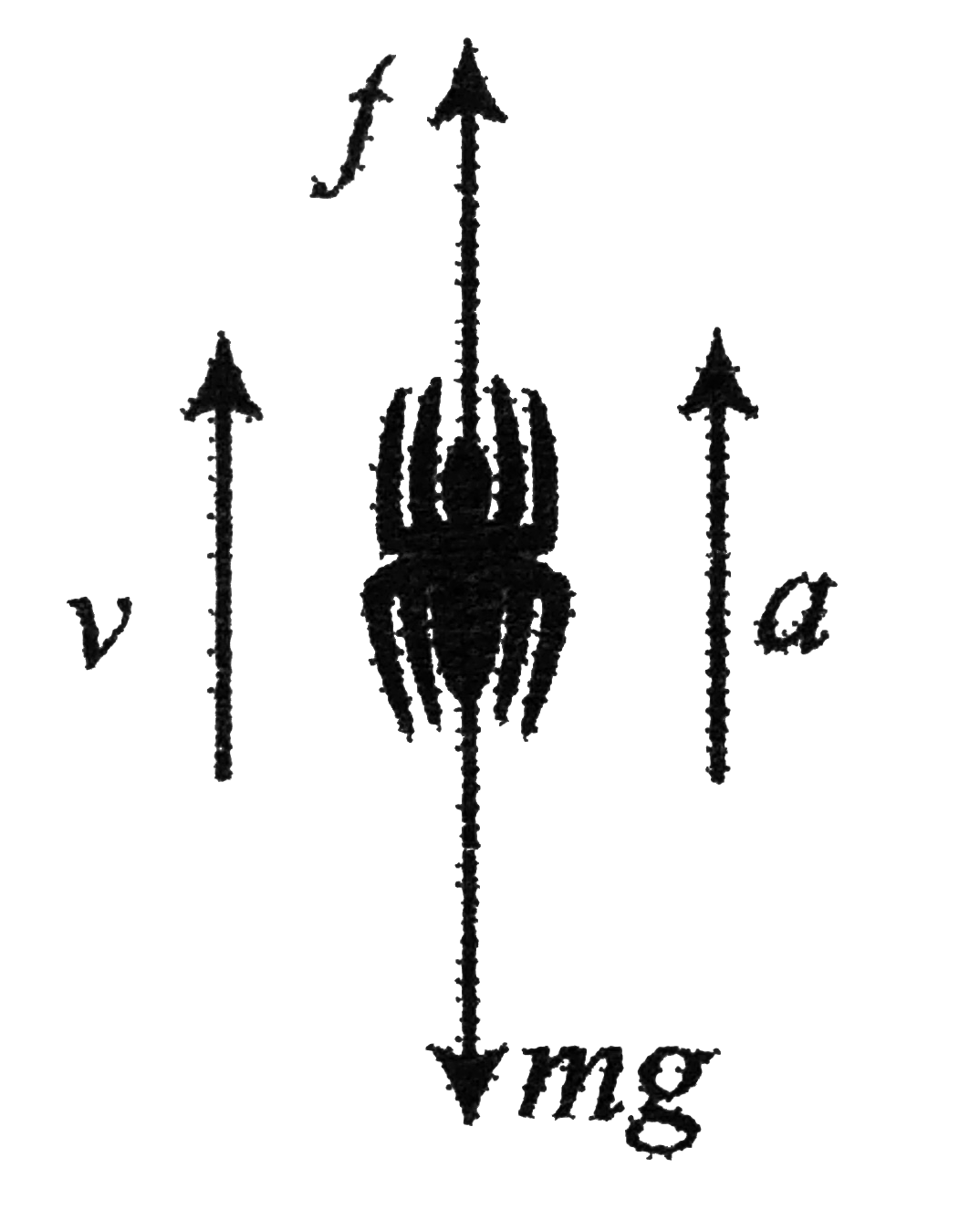A body is initially at rest. It undergoes one dimensional motion with constant acceleration. The power delivered to it at time t is proportional to
t1/2
t
t3/2
t2
The correct Answer is:B
To solve the problem of determining how the power delivered to a body undergoing one-dimensional motion with constant acceleration is proportional to time t, we can follow these steps:
Step 1: Understand the Initial Conditions
The body is initially at rest, which means its initial velocity u=0.
Step 2: Write the Equation for Velocity
Since the body is moving with constant acceleration a, we can use the equation of motion to find the velocity v at time t:
v=u+at
Substituting u=0:
v=at
Step 3: Write the Expression for Force
The force F acting on the body can be expressed using Newton's second law:
F=ma
where m is the mass of the body and a is the constant acceleration.
Step 4: Write the Expression for Power
Power P is defined as the rate at which work is done or the product of force and velocity:
P=F⋅v
Substituting the expressions for force and velocity:
P=(ma)(at)=ma2t
Step 5: Determine the Proportionality
From the expression P=ma2t, we can see that the power P is directly proportional to time t since m and a are constants. Therefore, we can conclude:
P∝t
Conclusion
The power delivered to the body at time t is proportional to t.
The body is initially at rest, which means its initial velocity u=0.
Since the body is moving with constant acceleration a, we can use the equation of motion to find the velocity v at time t:
v=u+at
Substituting u=0:
v=at
The force F acting on the body can be expressed using Newton's second law:
F=ma
where m is the mass of the body and a is the constant acceleration.
Power P is defined as the rate at which work is done or the product of force and velocity:
P=F⋅v
Substituting the expressions for force and velocity:
P=(ma)(at)=ma2t
From the expression P=ma2t, we can see that the power P is directly proportional to time t since m and a are constants. Therefore, we can conclude:
P∝t
The power delivered to the body at time t is proportional to t.
Topper's Solved these Questions
- WORK , ENERGY AND POWERBook:NCERT FINGERTPS ENGLISHChapter:WORK , ENERGY AND POWERExercise:NCERT
Explore 18 Videos
- WORK , ENERGY AND POWERBook:NCERT FINGERTPS ENGLISHChapter:WORK , ENERGY AND POWERExercise:ASSERTION & REASON
Explore 15 Videos
- WAVESBook:NCERT FINGERTPS ENGLISHChapter:WAVESExercise:Assertion And Reason
Explore 15 Videos
Similar Questions
Projectile motion is a two dimensional motion with constant acceleration. Is this statement true or false?
View SolutionA body initially at rest travels a distance 100 m in 5 s with a constant acceleration. Calculate : (i) the acceleration, and (ii) the final velocity at the end of 5 S.
View Solution
Knowledge Check
For the one dimensional motion, described by x=t−sint
Ax(t)>0 for all t gt 0Bν(t)>0 for all t>0Ca(t)>0 for all t>0Dall of these
A body starts from rest and acquires velocity V in time T. The instantaneous power delivered to the body in time 't' proportional to
View SolutionA body, initially at rest, starts moving with a constant acceleration 2 ms−2. Calculate : (i) the velocity acquired and (ii) the distance travelled in 5 s.
View SolutionA particle starting from rest undergoes a rectilinear motion with acceleration a. The variation of a with time t is shown below. The maximum velocity attained by the particle during its motion is

View SolutionAssertion : Simple harmonic motion is an example on one dimensional motion with non-uniform acceleration .
Reason : In simple harmonic motion, acceleration varies with displacement linearly.
View SolutionAn insect of mass m moves up along a hanging stationary thread, with acceleration a. Find the power delivered by the gravity after a time t.

View SolutionA motor drives a body along a straight line with a constant force. The power P developed by the motor must vary with time t as
View SolutionA variable force F acts on a body which is free to move. The displacement of the body is proportional to t3, where t = time. The power delivered by F to the body will be proportional to
View Solution

